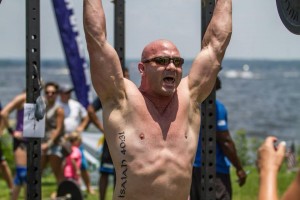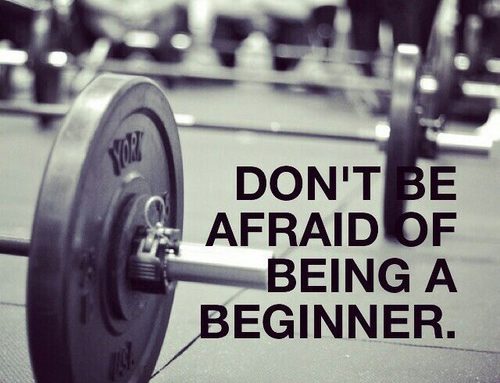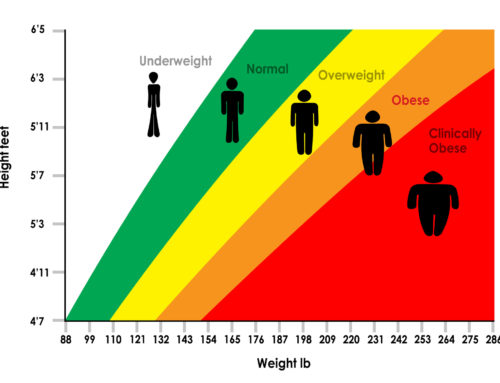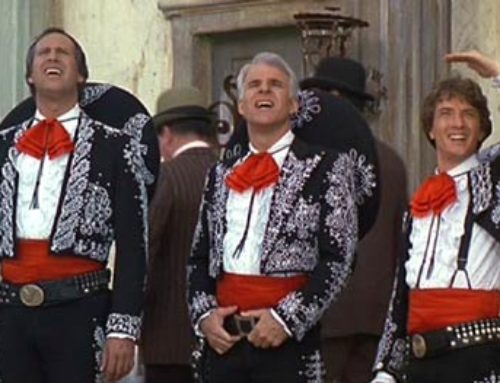Photo courtesy of Willie Villareal
I don’t care what anyone else tells you, if you are a masters athlete in any sport or endeavor, building STRENGTH should be your number one goal! We now know more than ever that building strength and increasing muscle mass should be the primary goal of every master’s fitness program. Once there is a foundation of strength, other capacities can easily be added and developed much quicker and with better efficiency.
Why STRENGTH? Consider the following argument;
1. Developing strength takes the most amount of time and organic change
2. The 10 general physical skills all rely on strength as their foundation. Without strength, the other 9 can’t exist
3. With age, strength experiences a rapid decline and can influence quality of life and capacity greater than any other physical capacity
4. Strong people can do more than weak people (ain’t that simple)
5. Individuals with more lean mass live longer and have a better quality of life
6. Stronger people need less help and can help weaker people
Should I say more…
For many of you reading this blog, you’re 40 something and need to get strong. Some of you may even be 50, 60, or 70 something and think it’s too late or lifting is for young people. But research shows us that strength training has a huge impact on even the senior population.
If you’re interested in building strength, I would recommend a solid program built on science and the experience of thousands of athletes. Start by implementing Starting Strength by Mark Rippetoe and buying his Book Starting Strength Basic Barbell Method, 3rd Edition! If you’re not good at doing things on your own, and particularly if you have no science training background, hire a Starting Strength Coach (SSC).
The problem with most strength programs is that they lack continuity, consistency, scientific approach and a plan. Yes, it’s not sexy, can be boring at times and isn’t that complicated. Without an end goal in mind, you’re basically just exercising which is great if you don’t mind waisting some time. I prefer to get the best return on time invested, and I know you do too.
Start out slow, learn the barbell movements, squat, press, deadlift, bench press and then the power clean. Keep it simple and recognize the genius in a linear periodization model, where over time with gradual increases, you get STRONGER and do it safely. The gradual loading over time will help your connective tissue to adapt safely and limit surprises along the way.
The other day I was in a prominent gym in Fort Worth, and the owner and trainer when asked stated, “I don’t use linear periodization for strength training. I use a development and restorative approach.” Well then, if you’re wanted to restore function and then develop the human musculoskeletal system, isn’t the best way to take a page and lesson from the developmental process of the human organism. It’s growth is neither random nor non-linear. It’s a genome controlled process that gradually develops over time to it’s full maturity. Hmm, that sounds familiar. I don’t care what anybody tells you, if they don’t believe in a linear periodization model for the novice athlete, they don’t understand human anatomy or the growth cycle. When I refer to the “novice Athlete” that includes 90% or more of the people working out in strength training programs. Many individuals will stay as a novice or intermediate athlete throughout their entire fitness development. It’s important to understand the value of doing something, like strength training, consistently and having a plan and goal in mind.
Remember that strength training is not the same as using weight training to develop bulk or size for body building. Even though, strength training will produce an increase in size in the muscle, that is not usually the goal. The goal is to get strong. In training for muscle size, the goal is to hypertrophy the muscle to appear bigger and strength is of less concern. Generally, training with heavier loads over time and using 3-5 sets of 1-5 reps will produce strength when performed. Starting Strength uses 3 sets of 5 reps across for the squat, press, bench press, 1×5 for deadlift and 5×3 for power cleans, at 3 days per week/every other day for novice lifters. The load is not progressive between the sets, but is static and stays the same for all sets within that session. Training for size or bulk uses higher rep sets, and more sets with lighter loads. This is not the best way to get strong, even though it can produce some strength.
CrossFitting will make you stronger, it’s just not the most efficient manner to do so. Masters athlete’s programs need to be methodical and use the progression of loads over time between workouts. Then, their bodies can adapt to the weights and get stronger. Injury, is one of the number one reasons why masters have to stop or alter training. A program that does not control and support structure using the watchful eye of a coach puts you the athlete at greater risk. Let me be transparent, I own 3 gyms, all started as CF affiliates, and even in our gyms I see lifting that makes me want to cringe. A strength coach has to be well trained and be willing to teach, correct and cue where needed and never settle for less than stellar form in athletes.
“Surprise” workouts for strength are not an effective way to train for a masters athlete. In other words, an athlete goes into the gym one day and does a higher load and low reps for squats and then 3 days later does another “surprise” workout with more reps and sets and a lower squat load. What’s the point? Unless, there is a specific reason for the change in intensity, recovery or de-loading between workouts, there’s no purpose. My experience has been if you examine 3 months of programming from most gyms, you won’t find much in the order of organized thought. CrossFit can be used for conditioning and the combining of skills, strength, endurance and mobility into workouts that provide a GPP program. Barbell and complex weight lifting movements should be used for strength, power training, testing performance and competition. Countless masters athletes workout as if each workout is a competition or performance. This type of training is not sustainable.
My recommendation is that if you’re a masters athlete looking to build good solid general fitness, strength should be the primary focus of your prescribed programming. Yes, consider it a prescription and only use the minimal effective dosage(MED). Build your strength first and then work on conditioning, skills, mobility etc….Your strength will see faster gains if you don’t concurrently train strength with endurance. If you have to train both at the same time, use interval training for endurance. Strength should never be secondary unless there is a sport specific reason to recruit more endurance style training for your sport. But even then, strength should be the foundation of your capacity to create a solid footing for your fitness. Want to be a better cyclist, weightlifter, crossFitter, golfer, climber, runner, tennis player, etc…build strength! I have athletes ask me all the time, when does my strength cycle end? There is no end. Meaning that strength is not a capacity that develops and then is static and doesn’t have to be maintained or improved. You are either getting stronger or weaker. With that being said, there are periods in your training where strength gains are slower and the volume/intensity changes to support development in other areas. But, in a perfect world, we would all like for strength to not decline, but actually continue to produce slow gains.
Strength is a Masters Athletes #1 Ally!
Coach D
- Starting Strength Basic Barbell Method, 3rd Edition, Mark Rippetoe.
- Interference of Strength Development by Simultaneously Training for Strength and Endurance* Robert C. Hickson, Eur J Appl Physiol 45, 255-263 (1980).
- Muscle Mass Index As a Predictor of Longevity in Older Adults Preethi Srikanthan, MD, MS,a Arun S. Karlamangla, MD, PhD The American Journal of Medicine, Vol 127, No 6, June 2014.
- Concurrent Training: A meta-analysis examining Interference of aerobic and resistance exercises. Jacob Wilson, et al. The Journal of Strength & Conditioning Research, 26(8)/2293–2307.





Hi Coach Deaton. I see more and more posts and publications on people moving more towards Starting Strength over CrossFit type training. I do want to increase or at least slow the loss of muscle mass as I get older but I’m having a hard time reconciling the SS training method with the conditioning benefits I’ve gotten from CrossFit.
Since I’ve transitioned from Globo-Gym to CrossFit I’ve seen measurable health benefits with my cholesterol, heart rate, etc and I’m struggling in my mind how I would incorporate a SS type routine into my training cycle so that I can keep my conditioning up and not lose the health benefits I’ve seen over the past couple years while also building up the strength goals of SS.
Is that not possible as per “strength should be the primary focus” and perhaps SS is not for me? Or would a possible path be the M/W/F Workout A and Workout B rotation with more Metcon focused WODs on Tue and Thur.
Hopefully this isn’t too disjointed, and if a blog or article on that is coming in the future I know I’d surely find benefit from that.
Thanks-Rich
Great question Rich! It’s not a unusual question at all. I wish more athletes sought info like you. Here’s what I would recommend. If your wanting to get stronger and it is your priority, do something like SS and that’s all. If you are wanting to get stronger and you also want to balance that with some conditioning, I recommend you to do the program per SS, three days a week every other day, and then conditioning 1-2 days a week. Just know that performing conditioning on what should be rest days will slow strength progress and can affect the growth curve. If you’re a novice and strength is utmost importance, it does not make sense to condition in between workouts because it can drastically affect your potential to develop strength while being a novice. But if you are going to do both, do the following;
ABA rotation
3 days per week with a day rest between from strength training
Keep conditioning to body weight movements or lighter movements, rowing, sprinting, push/pulling sleds, etc…
Always give strength priority and back off conditioning if needed(unless you’re strong as an ox already)
Read these articles, they will give you some insight into the value of strength training on lipids and blood pressure, and concurrent training effects.
Effect of long-term resistance exercise on body composition, blood lipid factors, and vascular compliance in the hypertensive elderly men
Hyun-Sub Kim, Dae-Geun Kim
CONCURRENT TRAINING: A META-ANALYSIS EXAMINING INTERFERENCE OF AEROBIC AND RESISTANCE EXERCISES
JACOB M. WILSON,1 PEDRO J. MARIN,2,3 MATTHEW R. RHEA,4 STEPHANIE M.C. WILSON,1
JEREMY P. LOENNEKE,5 AND JODY C. ANDERSON
Thanks Coach. Here are the direct links for the articles you refer to in case anyone else is following this.
Effect of long-term resistance exercise on body composition, blood lipid factors, and vascular compliance in the hypertensive elderly men:
http://www.ncbi.nlm.nih.gov/pmc/articles/PMC3836511/
CONCURRENT TRAINING: A META-ANALYSIS EXAMINING INTERFERENCE OF AEROBIC AND RESISTANCE EXERCISES
http://www.elementssystem.com/pdfs/Wilson%20ConcurrentTraining%20MetaAnalysis%20JSCR%202012.pdf
Thanks Rich!